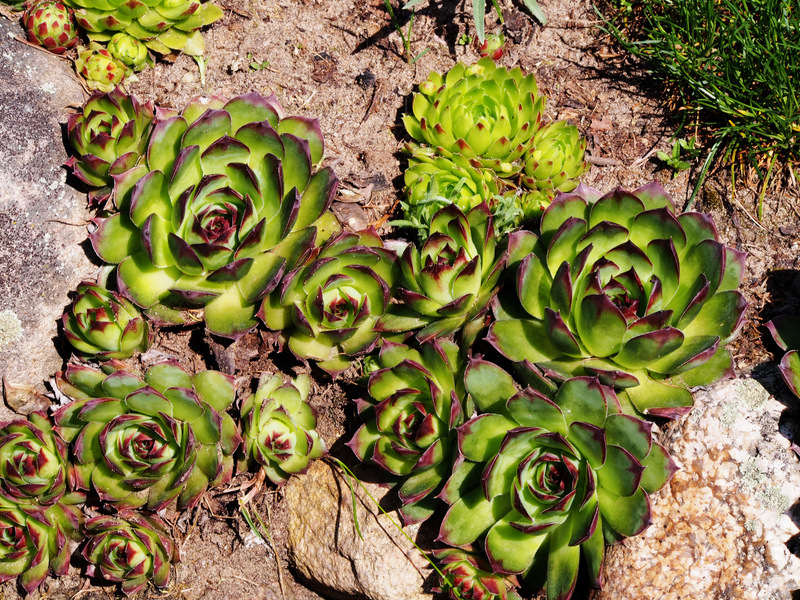Join the green movement: how gardening offsets climate change
Posted on 04/09/2025
Join the Green Movement: How Gardening Offsets Climate Change
Climate change is one of the most urgent challenges facing humanity today. From increasing global temperatures to unpredictable weather patterns, its impacts are being felt worldwide. Amid international concern and large-scale solutions, it's easy to feel powerless as an individual. Yet, there's an accessible, impactful way for every person to contribute to the fight against climate change: gardening.
Gardening offers a practical and rewarding path to help mitigate climate change. When you embrace the green movement and integrate gardening into your life, you actively participate in reducing your carbon footprint and fostering a healthier planet. In this comprehensive article, we'll explore the science, techniques, and community impact of gardening for climate change. Ready to learn how to join the green movement and offset your personal environmental impact? Let's dig in!
Understanding the Green Movement and Climate Change
The green movement encompasses individuals, communities, and organizations dedicated to environmental stewardship, sustainability, and reducing human impact on the planet. One of its most critical battlegrounds is climate change, specifically global warming brought on by excessive greenhouse gas emissions.
What Is Climate Change?
Climate change refers to lasting changes in temperature, precipitation, wind patterns, and other elements of the Earth's climate system. Most notably fueled by fossil fuel combustion, deforestation, and industrial processes, these changes threaten ecosystems, agriculture, and human well-being worldwide.
How Does Gardening Factor In?
Joining the green movement through gardening may seem like a small step, but the cumulative impact of more green spaces can significantly offset climate change. Gardens absorb carbon dioxide from the atmosphere, promote biodiversity, reduce urban heat, and encourage sustainable lifestyles. Simply put, every seed planted is a victory for the climate!

The Science: How Gardening Helps Offset Climate Change
Understanding the science behind gardening for climate change mitigation will help you appreciate just how powerful your backyard or community space can be.
1. Carbon Sequestration
Plants naturally absorb carbon dioxide (CO2), the principal greenhouse gas, during photosynthesis. They store this carbon in their tissues--roots, stems, leaves, and even the soil. Through gardening, especially with trees, shrubs, and perennial plants, you help lock away more atmospheric carbon.
- Tree and shrub planting in home gardens sequesters more CO2 than annuals.
- Composting organic matter enriches soil carbon content, reducing atmospheric carbon.
- Healthy, undisturbed soils hold vast amounts of carbon.
2. Biodiversity and Ecosystem Restoration
Modern landscapes, especially lawns and monocultures, offer little for wildlife or ecosystem function. By embracing diverse plantings and wildflower patches, you can create mini-refuges for birds, pollinators, and beneficial insects. Greater biodiversity leads to more resilient, self-sustaining ecosystems that can better withstand environmental stressors.
- Native plants support local insects and birds, restoring ecological balance.
- Pollinator-friendly gardens ensure survival of bees and butterflies vital for food production.
3. Reducing Urban Heat and Improving Air Quality
Urban areas suffer from the urban heat island effect, where buildings and pavement trap heat. Gardens and green spaces lower local temperatures through shading and evapotranspiration, while also filtering air pollutants. Cooler, greener neighborhoods mean less energy spent on air conditioning--another win for the climate!
4. Food Security and Reduced Food Miles
Growing your own food reduces reliance on commercial agriculture, which is a major contributor to greenhouse gases through fertilizer use, transport, and packaging. Homegrown veggies and fruits travel zero miles to your plate!
Practical Ways to Join the Green Movement with Gardening
Now that you know the impact, how can you put this knowledge into action? Below are actionable strategies to maximize your climate-positive gardening:
1. Choose Climate-Friendly Plants
- Plant native species: These support local wildlife, require less water, and are adapted to local climates.
- Opt for perennials and trees: Long-lived plants store more carbon over time.
- Grow a mix of flowers, shrubs, vegetables, and trees for maximum biodiversity.
2. Minimize Chemical Inputs
- Use organic fertilizers and natural pest treatments.
- Reduce or eliminate pesticide and herbicide use to maintain soil health and protect pollinators.
3. Build Healthy Soil
- Practice composting to recycle kitchen and garden waste--this enriches soil and keeps organic material out of landfills.
- Use mulch to conserve moisture, suppress weeds, and add organic matter.
- Avoid tilling where possible, as this releases stored soil carbon.
4. Save Water
- Collect rainwater using barrels or cisterns to reduce demand on piped water.
- Group plants with similar water needs together for efficient watering.
- Install drip irrigation to minimize evaporation.
5. Grow Your Own Food
- Create a kitchen garden with herbs, fruits, and vegetables.
- Swap surplus veggies or seeds with neighbors to foster a community food system.
- Choose heirloom and open-pollinated varieties to preserve genetic diversity.
6. Encourage Urban and Community Gardens
- Join local garden clubs or initiate community plots in unused public spaces.
- Green rooftops and vertical gardens are innovative ways to garden in cities with limited space.
7. Reduce Lawn Space
- Replace traditional lawns with wildflower meadows or edible landscaping.
- Lawns require frequent mowing, watering, and fertilizing, all of which contribute to greenhouse gas emissions.
8. Support Wildlife
- Set up bug hotels, bee houses, and bird nests to make your garden wildlife-friendly.
- Allow a section of your garden to go wild--nature will thank you!
The Broader Impact: Community and Global Benefits of Green Gardening
Individual action, when multiplied across millions of gardeners, has global consequences. Here's how joining the green movement with gardening sweeps beyond the backyard:
Building Climate-Resilient Cities
Urban gardens help buffer cities against temperature extremes, absorb stormwater to reduce flooding, and provide green corridors for wildlife. As more cities encourage rooftop, vertical, and community gardens, the collective cooling and air-purifying effect becomes significant.
Enhancing Food Security and Reducing Inequality
Community gardens bring people together, providing fresh produce to underserved populations, reducing food deserts, and lowering household food costs. They create a sense of ownership and engagement, empowering communities to shape their health and environment.
Inspiring Sustainable Lifestyles
Gardening connects people with nature and encourages broader adoption of green practices. Composting, waste reduction, sustainable transportation, and eco-conscious consumer choices often flow naturally from the gardening mindset. Gardeners become ambassadors for climate action in their circles.
Promoting Environmental Education
Schools and youth programs use gardens to teach students about ecosystems, where food comes from, and the principles of sustainability. A hands-on approach lays the groundwork for future generations who are informed and motivated to join the green movement.
Overcoming Barriers: Making Green Gardening Accessible to All
Access to green space is not always equal. However, the climate benefits of gardening increase as more people participate, so communities must strive for inclusivity. Simple solutions can help:
- Container gardening on balconies and patios brings greenery to any residence.
- Joining or forming community gardens creates shared spaces for those without private yards.
- Local governments can encourage greening initiatives with grants, free compost, or plant giveaways.
- Education campaigns help beginners learn how to start climate-friendly gardens even with limited resources.
Success Stories: Gardens That Offset Climate Change
1. The Urban Farming Revolution
In cities around the world, urban farms are revitalizing derelict spaces. These initiatives, often led by volunteers, produce tons of fresh produce, sequester carbon, and cool city streets. Every potted tomato and rooftop beehive builds a greener, cleaner urban landscape.
2. Rewilding Suburbia
Suburban communities have begun transforming traditional lawns into wildflower meadows and food forests. Not only do these vibrant spaces offset carbon emissions, but they also boost pollinator populations and reconnect people with nature.

Getting Started: Your Action Plan to Join the Green Movement
Ready to start your own climate-action garden? Here's a practical checklist to kick-start your journey:
- Survey your available space--balcony, yard, rooftop, or windowsill.
- Research native and climate-appropriate plants for your region.
- Plan your garden layout for maximum plant variety and ecological benefit.
- Set up a compost bin for food and yard scraps.
- Minimize lawn area, incorporate mulched beds, and plant trees if possible.
- Install water-saving features like rain barrels and drip irrigation.
- Engage your neighbors--share tips, plants, and encourage others to join the movement!
Conclusion: Planting Seeds for a Cooler, Greener Future
Offsetting climate change through gardening is within everyone's reach. By joining the green movement, you not only enrich your life and well-being but also help combat one of the planet's greatest threats. Whether you nurture balcony herbs, plant trees in public spaces, or build a backyard wildlife sanctuary, your efforts matter.
Each gardener is a steward of the earth, and together, we can grow a future that's sustainable, resilient, and full of life. Start small, learn as you go, and inspire others to green their world. Join the green movement today and watch your impact blossom!

